For the 2025 school year, there are 2 public middle schools serving 585 students in Keyes Union School District. This district's average middle testing ranking is 7/10, which is in the top 50% of public middle schools in California.
Public Middle Schools in Keyes Union School District have an average math proficiency score of 35% (versus the California public middle school average of 31%), and reading proficiency score of 52% (versus the 46% statewide average).
Minority enrollment is 70% of the student body (majority Hispanic), which is less than the California public middle school average of 78% (majority Hispanic).
Overview
This School District
This State (CA)
# Schools
3 Schools
3,501 Schools
# Students
1,055 Students
1,854,363 Students
# Teachers
49 Teachers
87,821 Teachers
Student : Teacher Ratio
22:1
22:1
District Rank
Keyes Union School District, which is ranked #818 of all 1,925 school districts in California (based off of combined math and reading proficiency testing data) for the 2021-2022 school year.
The school district's graduation rate of 80% has stayed relatively flat over five school years.
Overall District Rank
#814 out of 1941 school districts
(Top 50%)
(Top 50%)
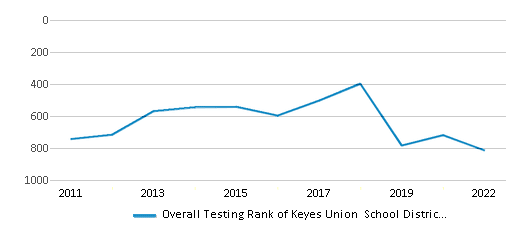
Math Test Scores (% Proficient)
31%
33%

Reading/Language Arts Test Scores (% Proficient)
46%
47%
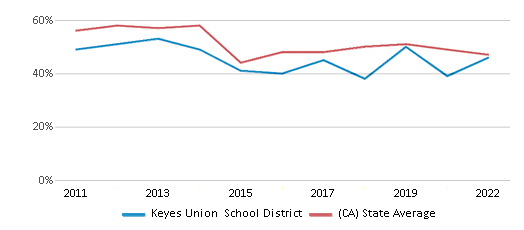
Science Test Scores (% Proficient)
28%
29%
Graduation Rate
≥80%
87%
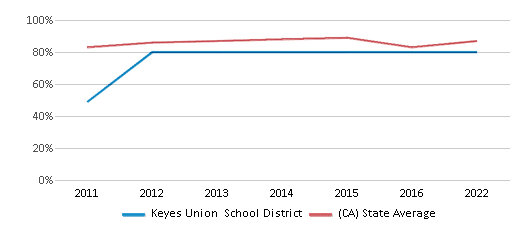
Students by Ethnicity:
Diversity Score
0.47
0.64
# American Indian Students
8 Students
9,887 Students
% American Indian Students
1%
1%
# Asian Students
60 Students
201,760 Students
% Asian Students
6%
11%
# Hispanic Students
734 Students
1,009,980 Students
% Hispanic Students
69%
55%
# Black Students
9 Students
97,908 Students
% Black Students
1%
5%
# White Students
228 Students
413,325 Students
% White Students
22%
22%
# Hawaiian Students
1 Student
7,600 Students
% Hawaiian Students
n/a
n/a
# Two or more races Students
15 Students
109,003 Students
% of Two or more races Students
1%
6%
Students by Grade:
# Students in PK Grade:
-
83
# Students in K Grade:
124
90,358
# Students in 1st Grade:
89
70,728
# Students in 2nd Grade:
105
73,359
# Students in 3rd Grade:
106
73,090
# Students in 4th Grade:
109
76,068
# Students in 5th Grade:
104
82,191
# Students in 6th Grade:
114
289,122
# Students in 7th Grade:
118
439,549
# Students in 8th Grade:
97
441,705
# Students in 9th Grade:
23
59,696
# Students in 10th Grade:
18
51,846
# Students in 11th Grade:
26
51,149
# Students in 12th Grade:
22
55,419
# Ungraded Students:
-
-
District Revenue and Spending
The revenue/student of $17,677 in this school district is less than the state median of $19,974. The school district revenue/student has stayed relatively flat over four school years.
The school district's spending/student of $15,505 is less than the state median of $18,396. The school district spending/student has stayed relatively flat over four school years.
Total Revenue
$19 MM
$116,387 MM
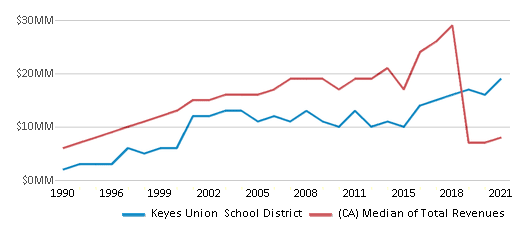
Spending
$16 MM
$107,188 MM
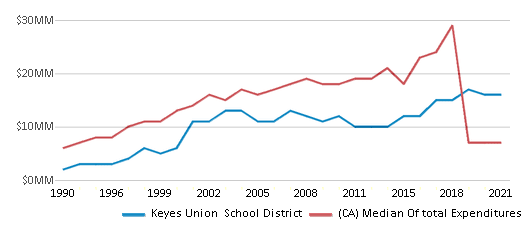
Revenue / Student
$17,677
$19,974

Spending / Student
$15,505
$18,396
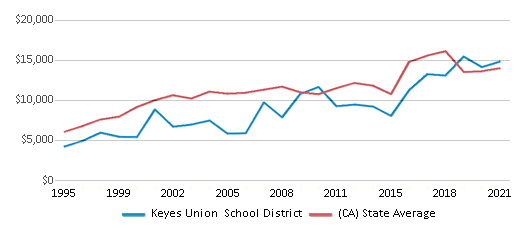
Best Keyes Union School District Public Middle Schools (2025)
School
(Math and Reading Proficiency)
(Math and Reading Proficiency)
Location
Grades
Students
Rank: #11.
Keyes To Learning Charter
Charter School
(Math: 45-49% | Reading: 60-64%)
Rank:
Rank:
8/
Top 30%10
5709 Ninth St.
Keyes, CA 95328
(209) 634-6467
Keyes, CA 95328
(209) 634-6467
Grades: K-12
| 354 students
Rank: #22.
Barbara Spratling Middle School
(Math: 24% | Reading: 43%)
Rank:
Rank:
5/
Bottom 50%10
5277 Washington Rd.
Hughson, CA 95326
(209) 664-3833
Hughson, CA 95326
(209) 664-3833
Grades: 6-8
| 231 students
Recent Articles

Year-Round Or Traditional Schedule?
Which is more appropriate for your child? A year-round attendance schedule or traditional schedule? We look at the pros and cons.

Why You Should Encourage Your Child to Join a Sports Team
Participating in team sports has a great many benefits for children, there is no doubt. In this article you will learn what those benefits are.

White Students are Now the Minority in U.S. 九游体育s
Increasing birth rates among immigrant families from Asia and Central and South America, combined with lower birth rates among white families, means that for the first time in history, public school students in the United States are majority-minority. This shift in demographics poses difficulties for schools as they work to accommodate children of varying language abilities and socio-economic backgrounds.





